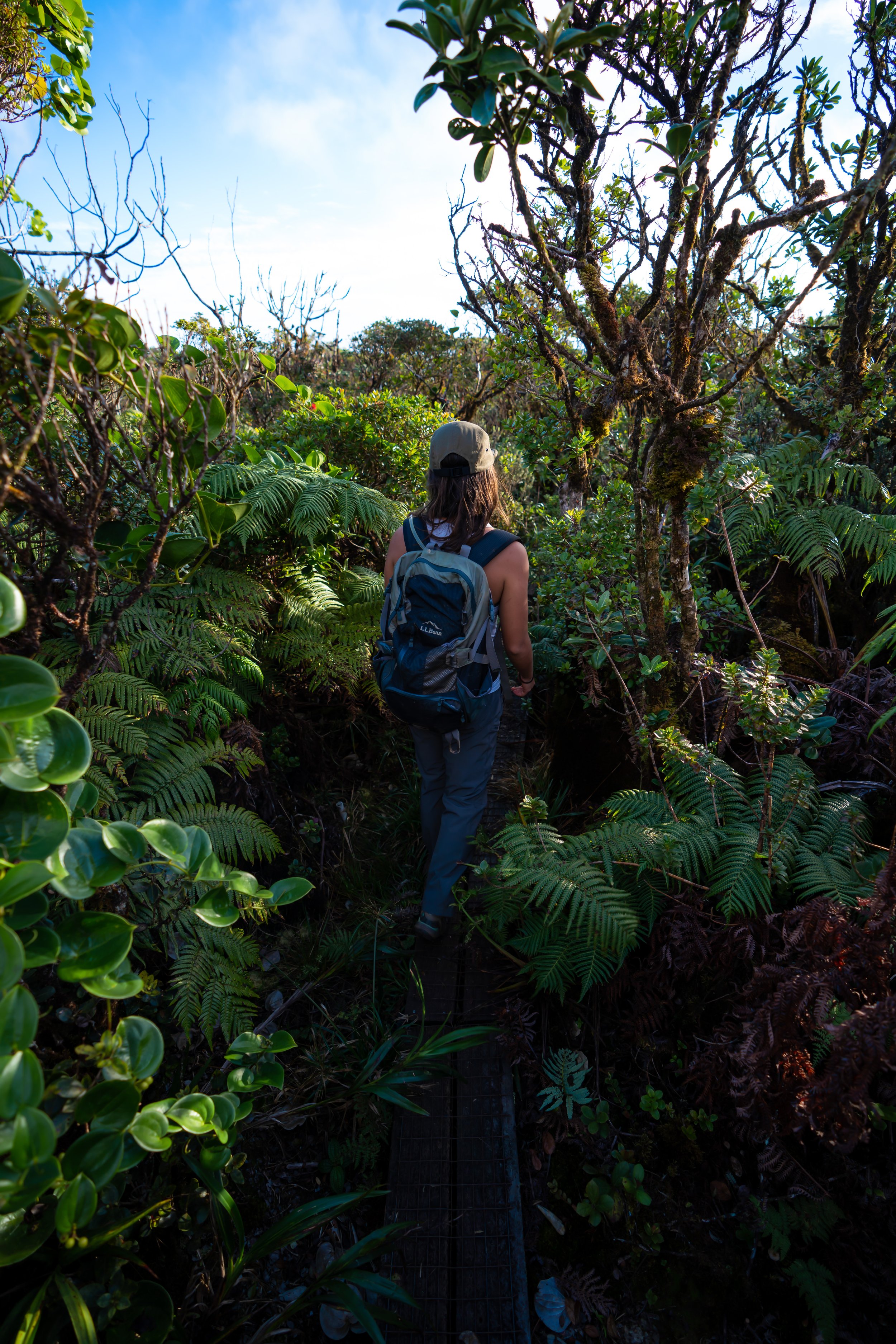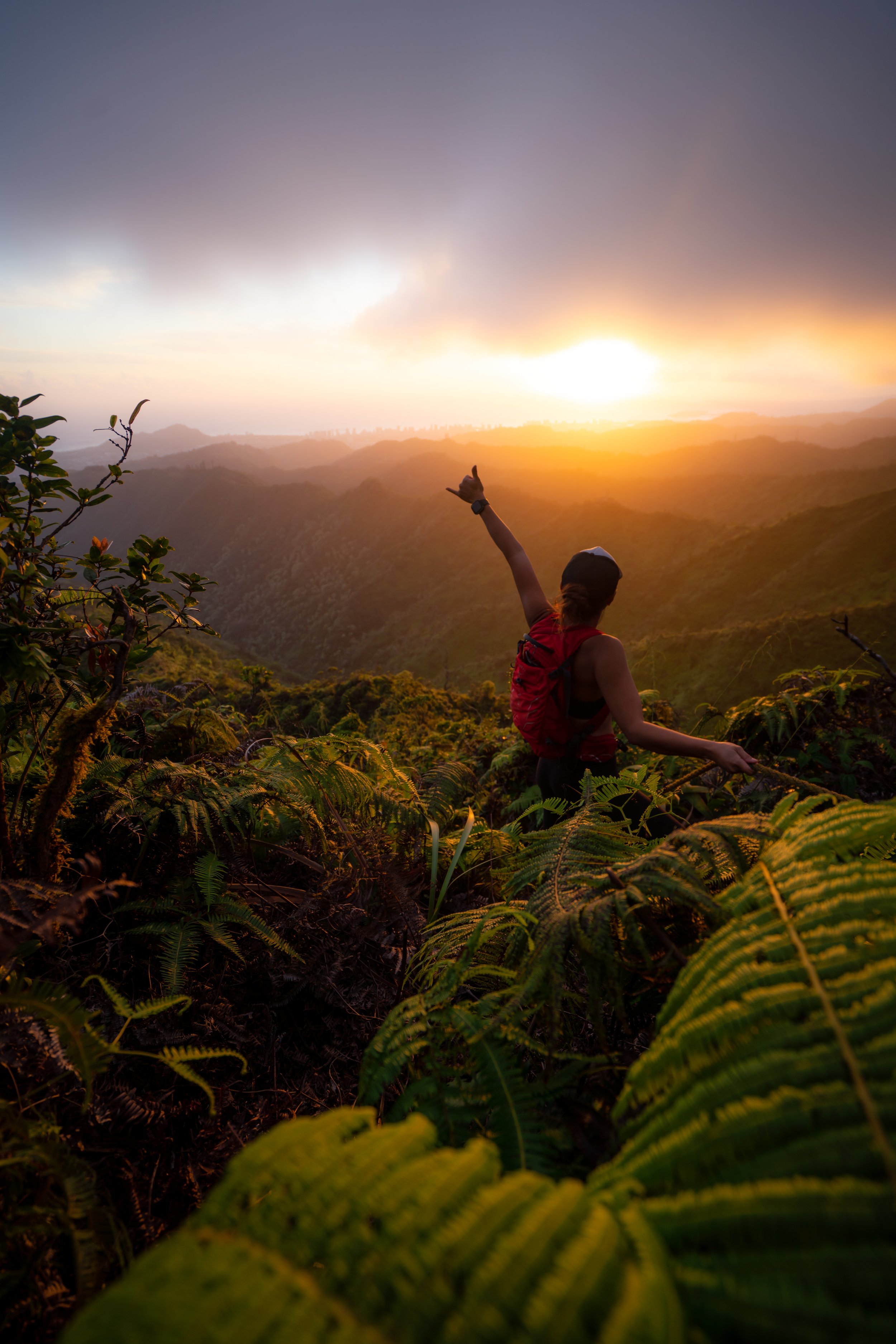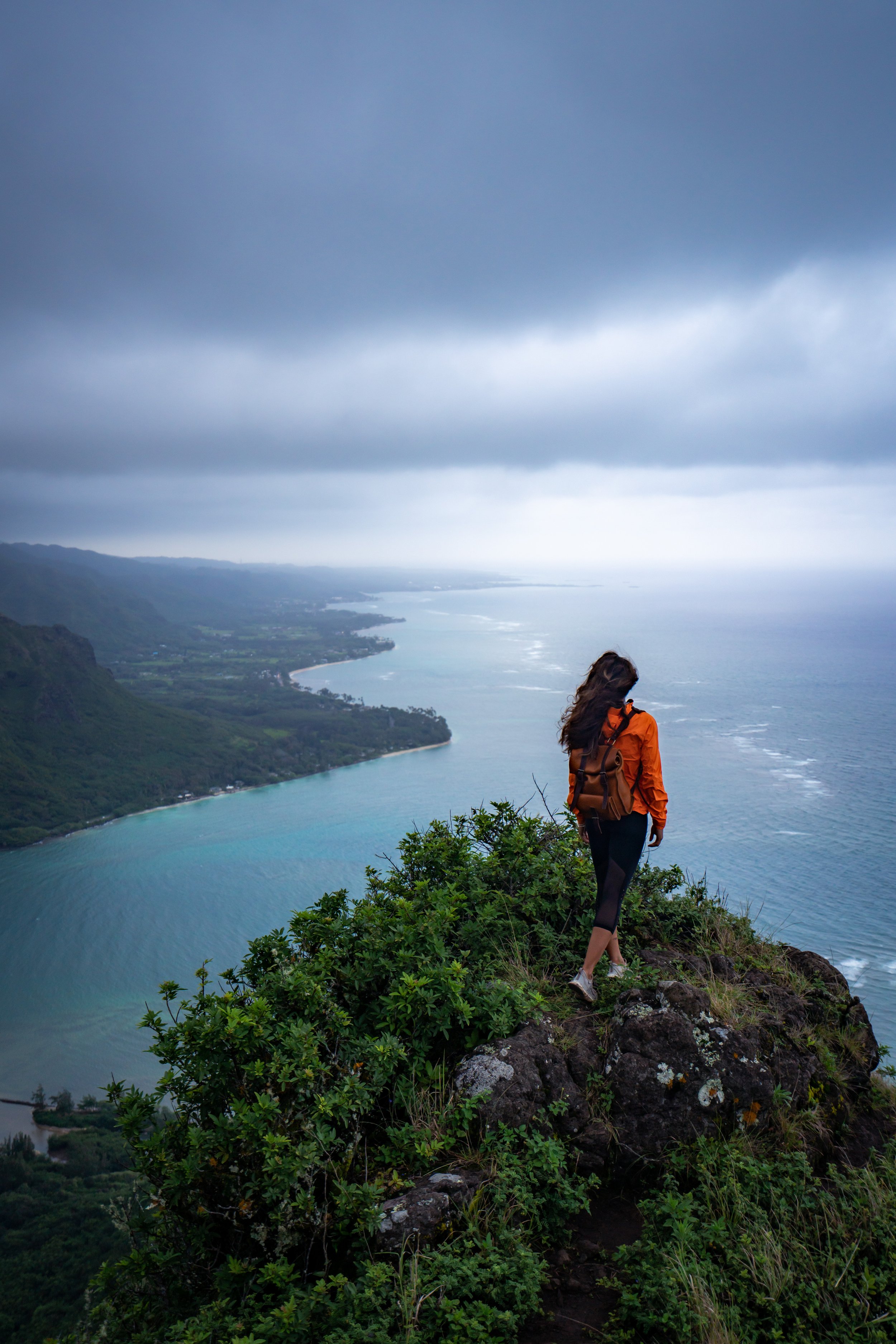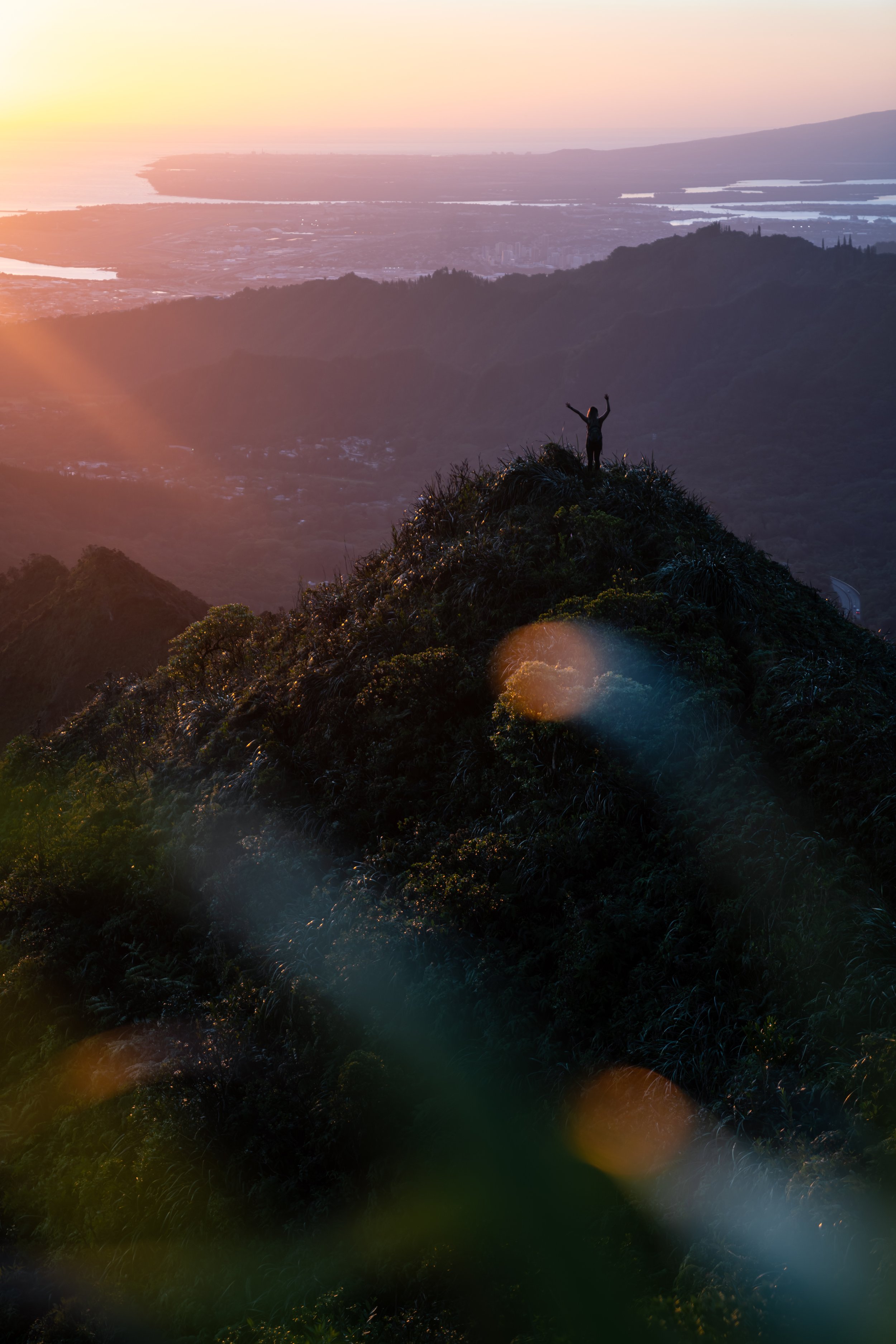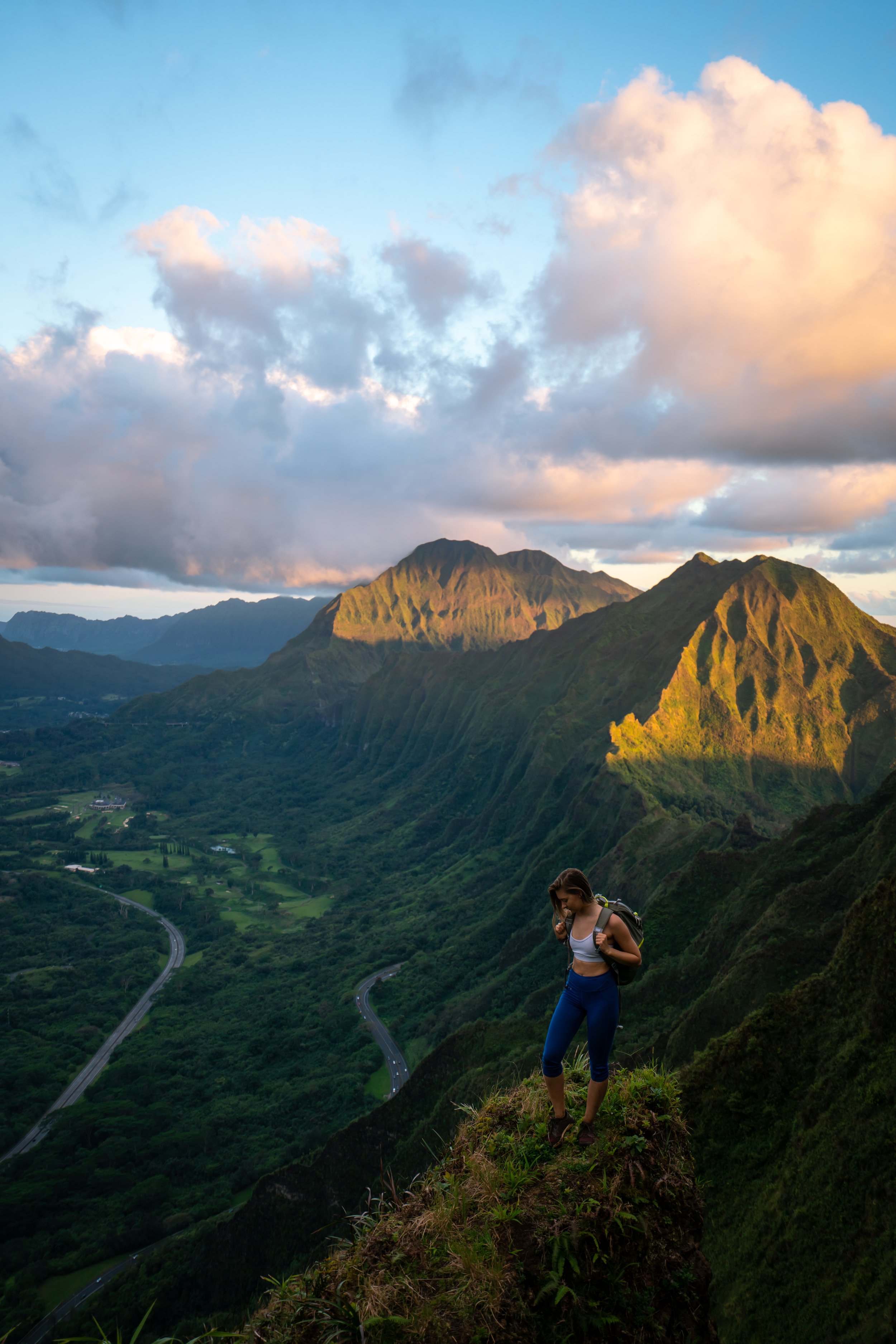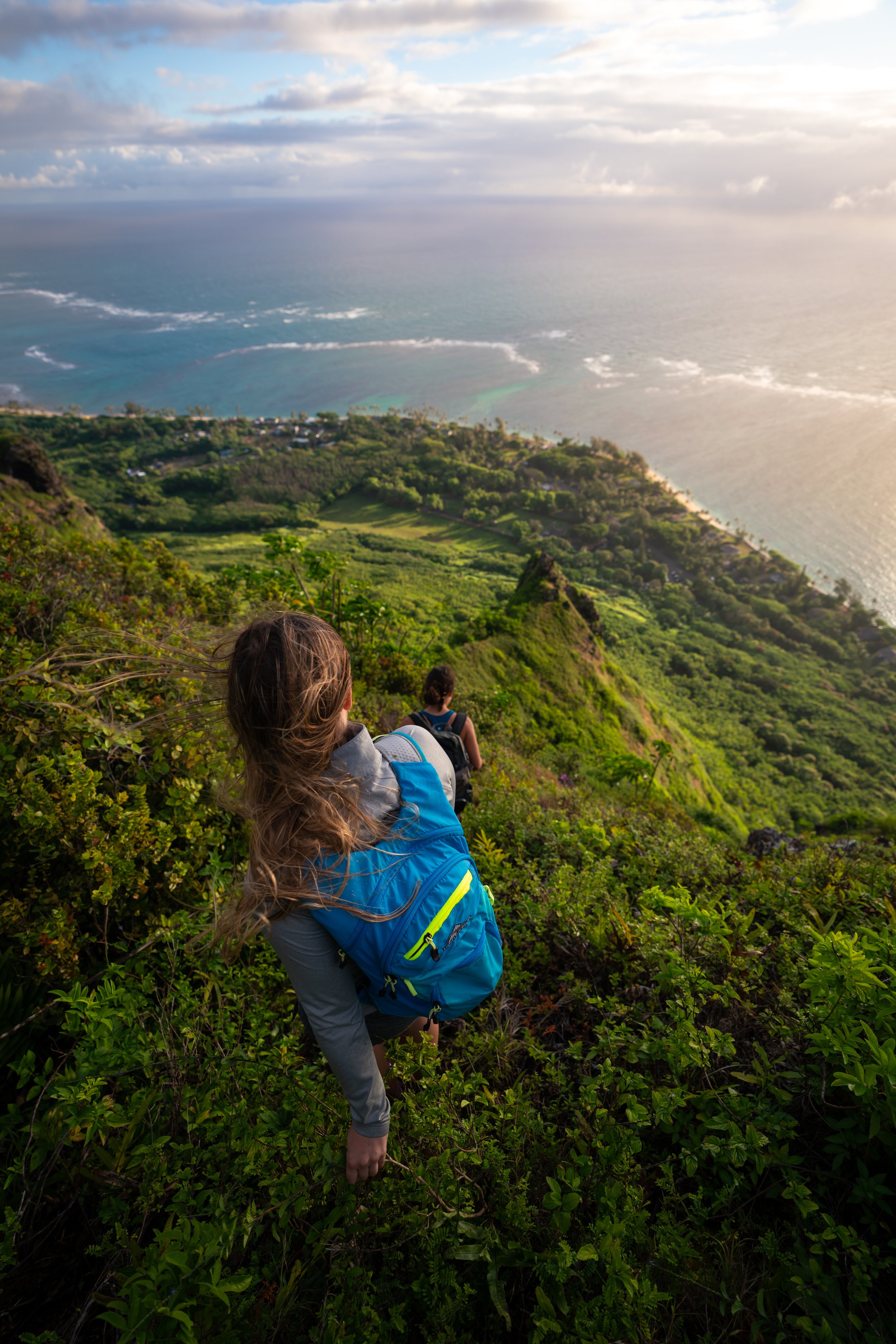Hiking the Kulanaʻahane Trail to the Moanalua Saddle on Oʻahu, Hawaiʻi
Distance: 11.2 miles / 18.0 km
Elevation Gain: ~1,400 ft. / 427 m
The Kulanaʻahane Trail in central Oʻahu is a little-known adventure through the bottom of Moanalua Valley, ultimately ending at the Moanalua Saddle where it overlooks the beautiful Haʻikū Valley and H-3 Freeway in Kāneʻohe.
That being said, very few hikers in Moanalua Valley are there for the Kualaʻahane Trail, as the vast majority of those hiking in Moanalua are there to attempt to access the Stairway to Heaven, often ending up on the Kulanaʻahane Trail by mistake.
In any case, the Moanalua Valley Trail to Kulanaʻahane is a great day hike for those looking to explore one of the island’s least-visited trails, and the views at the end truly speak for themselves!
Moanalua Valley Trailhead Parking
Parking for the Kulanaʻahane Trail is located in the very back of Moanalua Valley, just prior to the Moanalua Valley Neighborhood Park.
Yes, if you’re only there to access to the trail, parking is not allowed within Moanalua Valley Neighborhood Park, and you may receive a citation on your vehicle for doing so upon returning.
Google Maps Directions: Kulanaʻahane Trailhead
Hiking the Kulanaʻahane Trail
At the back of the Moanalua Valley Neighborhood Park, the trail to Kulanaʻahane begins on the Moanalua Valley Trail for the first 2.9 miles (4.7 km).
Kamananui Valley Road
As the Moanalua Valley Trail follows the Moanalua Stream, know that it’s generally easiest to stay on the high path whenever the trail splits to avoid unnecessary ups and downs.
The photo below is one of the first bridges that you will encounter in Moanalua Valley, which is easiest to stay on the left-hand side.
When the trail opens up to this big clearing in the photo below, go right to continue on Kamananui Valley Road toward the start of Kulanaʻahane.
This section of the Kamananui Valley Road is notorious for being very muddy, and that’s why there are a number of side trails through the trees that people have made, as this section never seems to dry out.
Moanalua Valley-Kulanaʻahane Junction
After about 2.9 miles (4.7 km) on the Moanalua Valley Trail, the Kulanaʻahane Trail splits from Kamananui Valley Road on the left-hand side.
Here, go left to cross over the Moanalua Stream, and the Kulanaʻahane Trail will split with the Moanalua Middle Ridge Trail immediately following.
Kulanaʻahane-Moanalua Middle Ridge Junction
Immediately after the trail crosses the Moanalua Stream, the Kulanaʻahane splits with the Moanalua Middle Ridge.
At this split, go left to begin Kulanaʻahane up to the Moanalua Saddle, about 2.7 miles (4.3 km) away.
If you are interested in reading about the full Moanalua Middle Ridge Trail to the Koʻolau Summit, check out my separate article linked below.
Read My Separate Post: Moanalua Middle Ridge Trail
As I’m sure it’s obvious from photo below, the Kulanaʻahane Trail will make you very familiar with Hau, a native bushy tree that’s sometimes referred to as Hau bush.
Much of the Kulanaʻahane Trail is passes through this entanglement of Hau trees, but generally speaking, they are not much of an issue in terms of navigating through them.
North Fork of the Moanalua Stream
When the Moanalua Valley has been receiving enough rain, the stream may be flowing, which can make for a beautiful place to cool off on a hot day.
However, I caution against swimming if the water isn’t moving because of the infectious Leptospirosis, which is found in many streams across Hawaiʻi.
Kulanaʻahane Ridge
When the trail crosses the North Fork for the final time, the Kulanaʻahane Trail begins ascending the Kulanaʻahane Ridge Trail, which leads up to the Moanalua Saddle.
This final ascent climbs just under 300 ft. (91 m) in about 0.25 miles (0.4 km) to the end of the trail.
Moanalua Saddle (Koʻolau Summit Trail)
From the end of the Kulanaʻahane Trail, which is also the bottom of the Moanalua Saddle, you’ll have expansive views of the Haʻikū Valley and Kāneʻohe to the east.
Some of the other notable hikes that you can see from the top include the Kalāheo and Oneʻawa Hills.
On a different note, this is all without saying that the end of the Kulanaʻahane Trail is an access trail for the Koʻolau Summit Trail (KST).
That being said, do not hike past the initial summit if you weren’t planning on continuing further or if you ended up here by mistake while trying to get to Stairway to Heaven.
I say this because all three saddles along the Koʻolau Summit—Nuʻuanu, Kalihi, and Moanalua—are the trickiest and most technically challenging sections of the entire cross-island hike, meaning they are absolutely beyond most people’s hiking ability!
I only say this from a place of respect and caution, and on the day I took these photos, we ran into two fit guys who were attempting to reach the stairs but ended up at the saddle by mistake. After hearing our advice to turn around and not continue toward Stairway, they overconfidently proceeded anyway.
When they left, our group sat and watched them hike up the south side of the saddle to the first tricky section where they had almost immediately put themselves in a dangerous situation on the first climb. However, after about a half an hour of failed attempts to try and navigate the first climb, they both thankfully made the right decision to turn back.
Again, I say all of this as a friendly reminder, as I have lived through the worst possible outcome of losing a good friend here in Hawaiʻi.
Read My Separate Post: Koʻolau Summit Trail (KST)
Native Plants in the Moanalua Valley
Outside of a few native plant restoration sites in the Moanalua Valley, trek through the lower elevations of the forest is heavily invaded with non-native, invasive species, like Strawberry Guava and the Kukui tree, a canoe plant that has proven to carry invasive tendencies.
However, Hau trees that were mentioned above are one of the seven native Hibiscus species in Hawaiʻi, and as the Kulanaʻahane Ridge Trail rises up from the valley floor at the end of the hike, there are many more native plants to find like ʻŌhiʻa lehua, Uluhe, Koa, and if you’re lucky, you may find an ʻOhe Mauka tree.
If you would like to learn more about these and many other native Hawaiian plants from across the islands, I encourage you to check out my separate post linked below.
Read My Separate Post: Native Hawaiian Plant Guide




